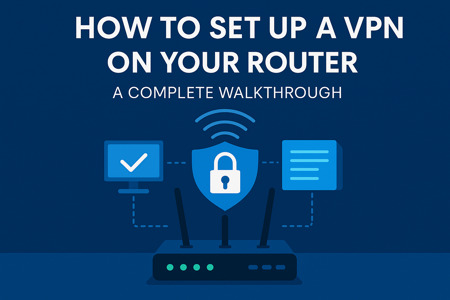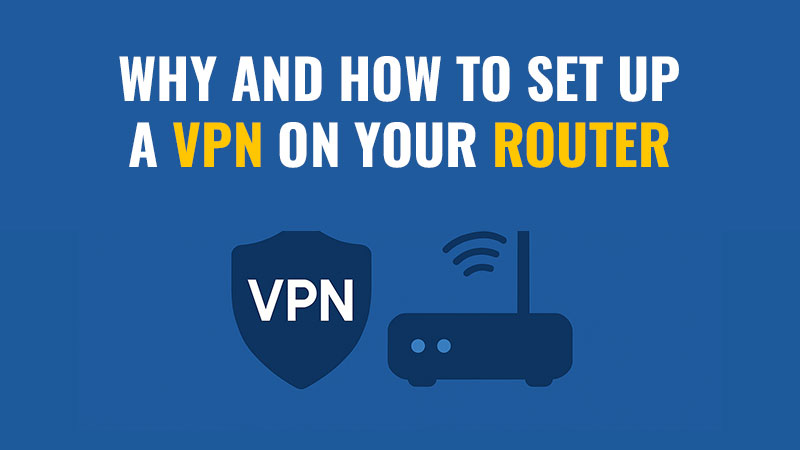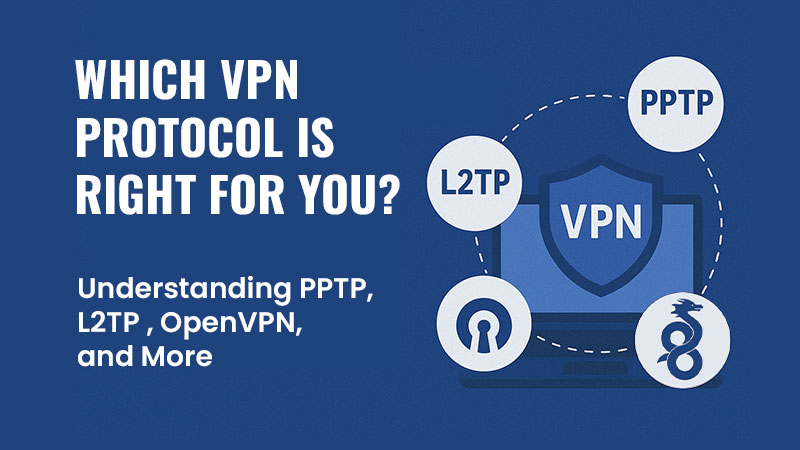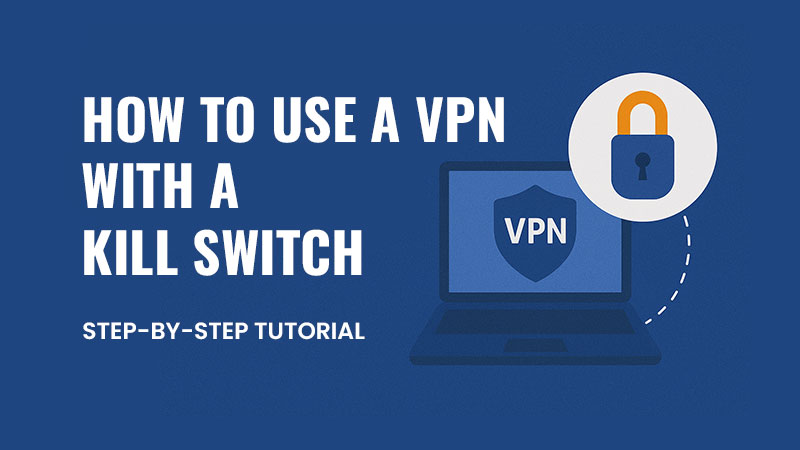Your online privacy and cybersecurity matter now more than ever. As cyber threats, data breaches, and invasive tracking become increasingly common, securing your internet connection has shifted from being optional to essential. While Virtual Private Networks (VPNs) are popular tools for protecting individual devices like smartphones and laptops, setting up a VPN on a home router can offer even more comprehensive protection. Unlike device-based VPNs, a VPN router setup secures your entire home network at once, automatically safeguarding all connected devices without requiring manual configuration for each one. This guide will explain why you should consider installing a VPN on your home router and how you can do it step-by-step.
Table of Contents
ToggleWhy You Should Set Up a VPN on Your Home Router
Top Free VPN

- 9.8
- The fastest and most reliable VPN on the market

- 9.5
- Low-cost VPN offering unrestricted device usage

- 8.2
- Affordable new VPN launched by top industry professionals
Setting up a VPN on your home router is one of the most effective ways to secure your entire home network with minimal effort. Unlike using a VPN app on each device, a VPN router setup provides blanket coverage, encrypting all internet traffic passing through your home network. This means every device — from smartphones and laptops to smart TVs and security cameras benefits from the same level of protection, regardless of whether they can support VPN software individually. This method offers enhanced privacy, greater convenience, and the ability to access region-restricted content on all connected devices. By choosing to install a VPN on your home router, you are proactively creating a safer, more private online environment for your family, while also simplifying the process of staying protected across multiple platforms.
1. Complete Network Protection
Installing a VPN on your home router automatically secures all devices connected to your Wi-Fi network. This extends VPN encryption to all connected gadgets, including smart TVs, gaming consoles, tablets, smartphones, and IoT devices that may not natively support VPN applications. This setup ensures that no device on your network is left exposed, giving you peace of mind that your online activity is secure across your entire home network.
2. Convenience and Always-On Security
Setting up a VPN at the router level ensures that the VPN is always active. You no longer need to manually connect each device to the VPN or worry about accidentally disconnecting. This always-on protection simplifies your online experience while keeping your data secure 24/7. Whether you turn your device on or off, or move between different rooms, the VPN protection remains seamlessly in place.
3. Bypass Regional Restrictions Across All Devices
A VPN on a home router allows you to bypass geo-restricted content across all your devices without the need for additional VPN apps. This means you can stream your favorite shows, access foreign websites, and use international services on smart TVs, gaming consoles, and tablets that typically don’t support VPNs. It provides a smooth and unrestricted internet experience from any device in your home.
4. Save Device Limits on VPN Accounts
Many VPN providers place limits on the number of devices that can be connected at the same time under a single account. By using a VPN on your router, your entire home network is counted as just one connection, regardless of how many devices are connected. This is an excellent way to maximize your VPN subscription, especially in large households where multiple users need simultaneous secure access.
5. Protect Smart Home Devices
Most smart home devices, like security cameras, smart thermostats, smart doorbells, and connected lighting systems, cannot run VPN software independently. A VPN router setup protects these devices by automatically routing all their traffic through the VPN. This shields them from potential hacking attempts, unauthorized surveillance, and other online threats, ensuring that your smart home ecosystem is fully secured.
How to Set Up a VPN on Your Router—A Complete Walkthrough

Installing a VPN on your home router may seem complex, but it’s a straightforward process when broken down into manageable steps. This guide walks you through each stage, from checking compatibility to testing your VPN connection.
Step 1: Check Router Compatibility
Not all routers support VPN installation. You’ll need:
- A VPN-compatible router—many models from ASUS, Netgear, and Linksys offer built-in VPN support.
- You can also use a router that supports DD-WRT, OpenWRT, or Tomato for enhanced VPN configuration.
Step 2: Choose a Reliable VPN Provider
Select a VPN that:
- Supports router configurations
- Gives step-by-step setup instructions for numerous routers.
- Has fast servers and strong encryption (look for AES-256 and protocols like OpenVPN or WireGuard)
Step 3: Access the router’s admin interface by signing in.
To access router settings, navigate to 192.168.1.1 or 192.168.0.1 via a browser and authenticate with your admin credentials.
Step 4: Set Up VPN Configuration
- If your router supports native VPN, look for the VPN section in the admin panel.
- Input the VPN configuration details provided by your VPN service (this usually includes server addresses, your VPN username/password, and encryption settings).
Step 5: Test Your VPN Connection
After saving your settings:
- Restart your router.
- Access the internet from any device connected to your home or office network.
- Visit a site like whatismyipaddress.com to check if your IP location matches the VPN server.
Final Thoughts
Setting up a VPN on your home router is one of the smartest ways to secure your entire network, simplify your VPN usage, and unlock global content without hassle. While it may seem technical at first, the initial setup process is manageable with the right guidance and support from your VPN provider. Once configured, you can enjoy long-term benefits that far outweigh the setup time.
A VPN router setup provides complete peace of mind by ensuring that every device connected to your home network is automatically protected. This covers smart home gadgets, gaming consoles, and other devices that don’t natively support VPN apps.It also allows you to overcome device connection limits imposed by many VPN providers It also ensures seamless access to geo-restricted content without interruptions.
If you’re serious about safeguarding your digital life, improving your online freedom, and protecting your personal data, installing a VPN on your home router is a powerful and forward-thinking solution. It delivers robust, always-on security and makes privacy effortless for you and your entire household.
Frequently Asked Questions (FAQs)
Can I use any router to set up a VPN?
No, not all routers support VPN functionality. You need a VPN-compatible router or one that can be flashed with third-party firmware like DD-WRT, OpenWRT, or Tomato to install a VPN.
Will a VPN on my router slow down my internet speed?
Yes, using a VPN may slightly reduce your internet speed due to the encryption process and routing traffic through remote servers. However, choosing a high-quality VPN provider with fast servers can minimize this impact.
Is it possible to change VPN servers directly from my router?
Yes, you can switch VPN servers through your router’s admin panel. Installation steps may vary depending on the VPN provider and the type of router you’re using. Some routers offer easy server-switching options, while others may require manual updates.
Do I still need VPN apps on individual devices?
Once your VPN is set up on your router, every device on your home network benefits from automatic protection.However, when you are using public Wi-Fi or outside your home, you should still use VPN apps on individual devices for protection.
What happens if my VPN connection drops?
Some routers support a kill switch feature that stops internet traffic if the VPN connection drops, preventing unprotected data from being transmitted. Check if your router or VPN provider offers this feature for added security.




